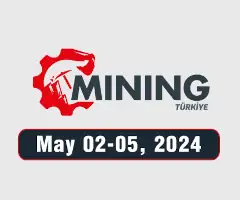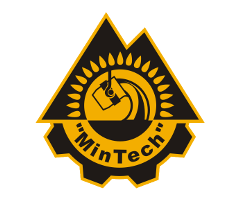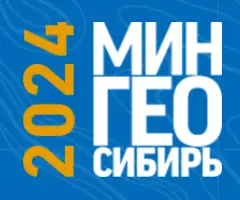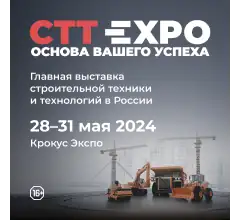Creation of a 3D geomechanical model to assess rock mass stability
![]() D.Zh. Akmatov1,2, R.V. Shevchuk1,2, E.A. Tuchel2, V.V. Nikolaichuk2, R.R. Galieva2
D.Zh. Akmatov1,2, R.V. Shevchuk1,2, E.A. Tuchel2, V.V. Nikolaichuk2, R.R. Galieva2
1 Geophysical Center of Russian Academy of Sciences, Moscow, Russian Federation
2 NUST MISIS, Moscow, Russian Federation
Russian Mining Industry №1 / 2024 стр. 145-148
Abstract: The use of 3D geomechanical models to assess rock stability is a common practice in present-day research. Creation of a 3D geomechanical model represents a key stage in studying the stress-and-strain state of rocks. The paper presents a theoretical overview of the rock stress-and-strain state calculation. The main objective of the research is to create a geomechanical numerical model aimed at describing the stress-and-strain state of rocks. Distribution of the stress tensor components for different directions of the forces applied and other boundary conditions was determined during the stress-and-strain modeling in order to determine the limits of their changes. Modeling of the stress-and-strain state in a 3D formulation was performed using the finite element method in the COMSOL Multiphysics software suite, which is a common approach among the researchers.
Keywords: geomechanical modeling, a 3D model, stress-and-strain state, finite element method, rock strength, rock mass stability
Acknowledgements: This work was conducted in the framework of budgetary funding of the Geophysical Center of Russian Academy of Sciences, adopted by the Ministry of Science and Higher Education of the Russian Federation.
For citation: Akmatov D.Zh., Shevchuk R.V., Tuchel E.A., Nikolaichuk V.V., Galieva R.R. Creation of a 3D geomechanical model to assess rock mass stability. Russian Mining Industry. 2024;(1):145–148. (In Russ.) https://doi.org/10.30686/1609-9192-2024-1-145-148
Article info
Received: 29.11.2023
Revised: 26.12.2023
Accepted: 10.01.2024
Information about the authors
Dastan Zh. Akmatov – Junior Researcher, Geophysical Center of Russian Academy of Sciences, Moscow, Russian Federation; Postgraduate Student of the Department of Geology and Surveying, Mining Institute of NUST MISIS, Moscow, Russian Federation; e-mail: This email address is being protected from spambots. You need JavaScript enabled to view it.
Roman V. Shevchuk – Junior Researcher, Geophysical Center of Russian Academy of Sciences, Moscow, Russian Federation; Postgraduate Student of the Department of Geology and Surveying, Mining Institute of NUST MISIS, Moscow, Russian Federation; e-mail: This email address is being protected from spambots. You need JavaScript enabled to view it.
Ekaterina A. Tuchel – Cand. Sci. (Eng.), Associate Professor of the Department of Geology and Surveying at the Mining Institute of NUST MISIS, Moscow, Russian Federation; e-mail: This email address is being protected from spambots. You need JavaScript enabled to view it. Viktor V. Nikolaichuk – Postgraduate Student of the Department of Geology and Surveying, Mining Institute of NUST MISIS, Moscow, Russian Federation; e-mail: This email address is being protected from spambots. You need JavaScript enabled to view it.
Rita R. Galieva – Postgraduate Student of the Department of Energy-Efficient and Resource-Saving Industrial Technologies Institute of Technologies of NUST MISIS; Moscow, Russian Federation; e- mail: This email address is being protected from spambots. You need JavaScript enabled to view it.
References
1. Liapin I.N., Korolev D.O., Korovin I.Yu., Kornev A.Yu., Koval M.E., Popov A.A. Experience in application of geo-mechanical simulation at the stage of well designing. Neft. Gaz. Novatsii. 2019;(10):17–20. (In Russ.)
2. Pavlov V.A., Polyakov D.A., Subbotin M.D., Melikov R.F., Pavlyukov N.A., Pospelova T.A. On the issue of import substitution in geomechanical modelling. Oil and Gas Technologies. 2019;(2):3–9. (In Russ.)
3. Khloptsova M.V. Problems of geomechanical modeling in mineral mining and underground storage operation. Mining Informational and Analytical Bulletin. 2017;(4):107–116. (In Russ.) Available at: https://giab-online.ru/files/Data/2017/4/107_116_4_2017.pdf (accessed: 09.01.2024).
4. Gvishiani A.D., Kaftan V.I., Krasnoperov R.I., Tatarinov V.N., Vavilin E.V. Geoinformatics and systems analysis in geophysics and geodynamics. Fizika Zemli. 2019;(1):42–60. (In Russ.) https://doi.org/10.31857/S0002-33372019142-60
5. Gvishiani A.D., Tatarinov V.N., Kaftan V.I., Losev I.V., Manevich A.I. Gis-oriented database for the system analysis and prediction of the geodynamic stability of the Nizhne-Kansky massif. Izvestiya, Atmospheric and Oceanic Physics. 2021;57(9):1151–1161. https://doi.org/10.1134/S0001433821090486
6. Morozov V.N., Manevitch A.I., Tatarinov V.N. Stress state modeling and geodynamic zoning in seismically active regions. Mining Informational and Analytical Bulletin. 2018;(8):123–132. (In Russ.) https://doi.org/10.25018/0236-1493-2018-8-0-123-132
7. Manevich A.I., Kolikov K.S., Egorova E.A., Geoecological aspects of stress-strain state modeling results of Leninsky coal deposit (Kuzbass, Russia). Russian Journal of Earth Science. 2019;(19):ES4002. https://doi.org/10.2205/2019ES000663
8. Kovalenko A.A., Zakharov N.E., Pul E.K., Zolotin V.G. Geomechanical aspects of the Internatsionalnaya kimberlite pipe mining. Gornyi Zhurnal. 2019;(2):27–31. (In Russ.) https://doi.org/10.17580/gzh.2019.02.05
9. Morozov V.N., Tatarinov V.N., Kolesnikov I.Y., Manevich A.I. Modeling the stress-strain state in the epicentral zone of a strong earthquake in Iran (December 26, 2003, Mw = 6.6). Izvestiya, Physics of the Solid Earth. 2018;54(4):602–611. https://doi.org/10.1134/S1069351318040080
10. Akmatov D.Zh., Evloev H.Y., Meller A.D., Manukyan T.A., Chadin V.N. Methodology for numerical modeling of stress fields in vicinities of coal mines. Russian Mining Industry. 2023;(1):39–44. https://doi.org/10.30686/1609-9192-2023-1-39-44
11. Akmatov D.J., Kuleshov A.M., Chadin V.N., Bogachuk A.G., Kolesnikov K.A. Stress-strain state of fault models analysis. Russian Mining Industry. 2023;(5):119–123. (In Russ.) https://doi.org/10.30686/1609-9192-2023-5-119-123
12. Akmatov D.Zh., Manevich A.I., Tatarinov V.N., Shevchuk R.V. 3D structure tectonics model of Yenisei site of the Nizhnekansk Massif. Gornyi Zhurnal. 2023;(1):69–74. (In Russ.) https://doi.org/10.17580/gzh.2023.01.11
13. Manevich A.I., Tatarinov V.N., Kolikov K.S. Detection of crustal deformation anomalies with regard to spatial scale effect. Eurasian Mining. 2019;(2):19–22. https://doi.org/10.17580/em.2019.02.04
14. Tarasov B.G. Fan mechanism of dynamic shear fractures as a source of strength and brittleness paradoxes in rocks. Gornyi Zhurnal. 2020;(1):18–23. (In Russ.) https://doi.org/10.17580/gzh.2020.01.03
15. Biryuchev I.V., Makarov A.B., Usov A.A. Geomechanical model of underground mine. Part I. Creation. Gornyi Zhurnal. 2020;(1):42–48. (In Russ.) https://doi.org/10.17580/gzh.2020.01.08
16. Syedina S.A., Baltiyeva A.A., Shamganova L.S. Development of 3D geomechanical models for underground mines and open pits. Problems of Subsoil Use. 2018;(1):60–65. (In Russ.) https://doi.org/10.25635/2313-1586.2018.01.060





